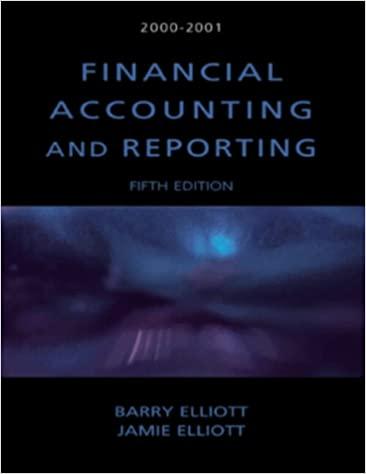Question
Laker Company reported the following January purchases and sales data for its only product. For specific identification, ending inventory consists of 180 units from the
Laker Company reported the following January purchases and sales data for its only product. For specific identification, ending inventory consists of 180 units from the January 30 purchase, 5 units from the January 20 purchase, and 15 units from beginning inventory. Date Activities Units Acquired at Cost Units sold at Retail January 1 Beginning inventory 140 units @ $ 6.00 = $ 840 January 10 Sales 100 units @ $ 15 January 20 Purchase 60 units @ $ 5.00 = 300 January 25 Sales
Determine the cost assigned to ending inventory and to cost of goods sold using specific identification. For specific identification, ending inventory consists of 180 units from the January 30 purchase, 5 units from the January 20 purchase, and 15 units from beginning inventory.
Determine the cost assigned to ending inventory and to cost of goods sold using LIFO.
| ||||||||||||||||||||||||||||||||||||||||||||||||||||||||||||||||||||||||||||||||
2 decimal places required. | ||||||||||||||||||||||||||||||||||||||||||||||||||||||||||||||||||||||||||||||||
- Specific Id
Determine the cost assigned to ending inventory and to cost of goods sold using weighted average. Note: Round cost per unit to 2 decimal places.
| |||||||||||||||||||||||||||||||||||||||||||||||||||||||||||||||||||||||||||||||||
Determine the cost assigned to ending inventory and to cost of goods sold using FIFO.
| ||||||||||||||||||||||||||||||||||||||||||||||||||||||||||||||||||||||||||||||||
Step by Step Solution
There are 3 Steps involved in it
Step: 1

Get Instant Access to Expert-Tailored Solutions
See step-by-step solutions with expert insights and AI powered tools for academic success
Step: 2

Step: 3

Ace Your Homework with AI
Get the answers you need in no time with our AI-driven, step-by-step assistance
Get Started


